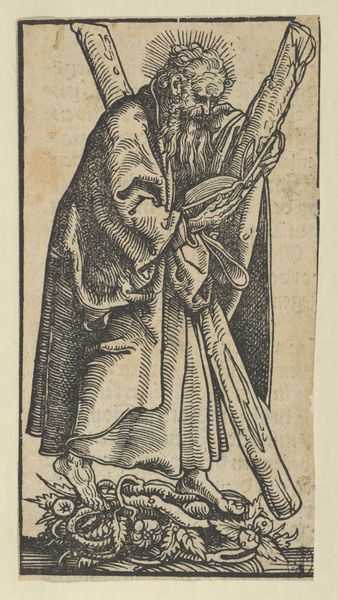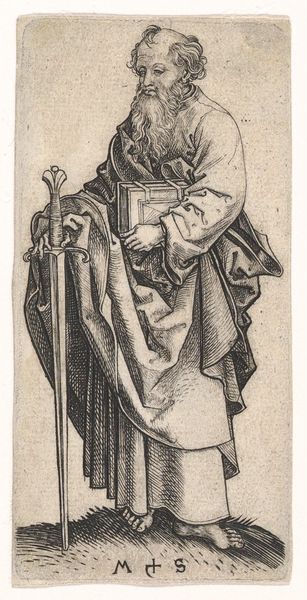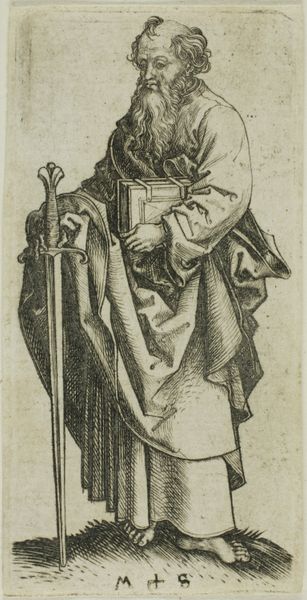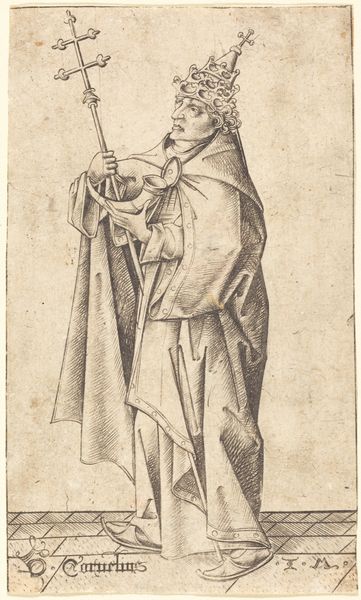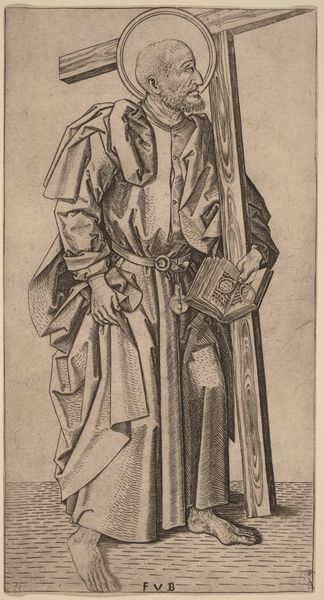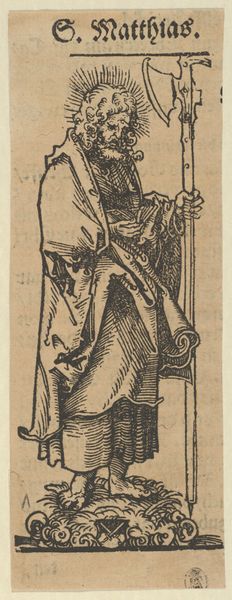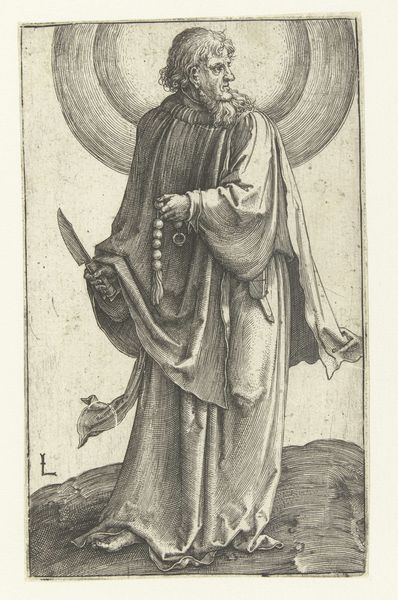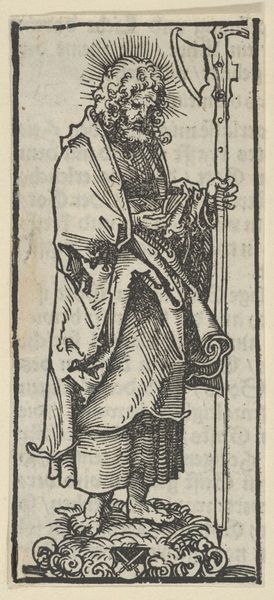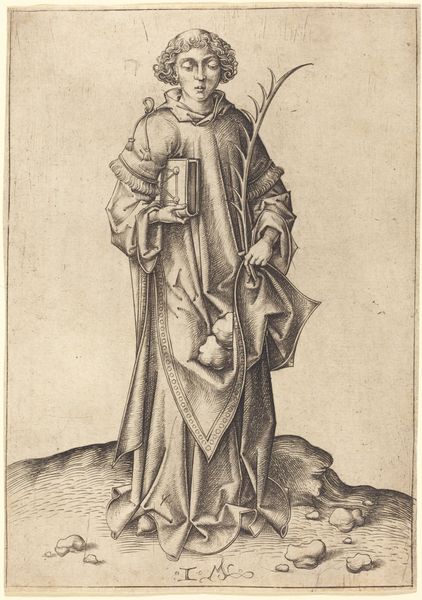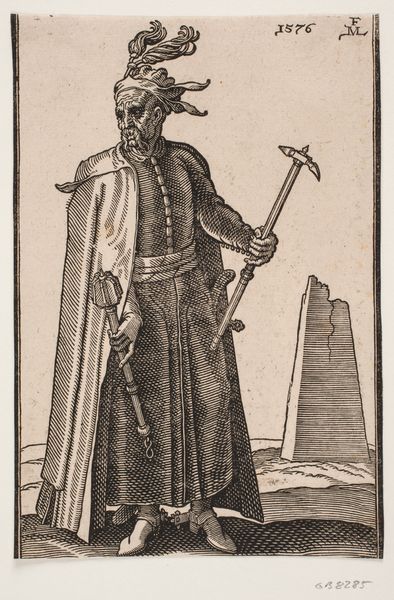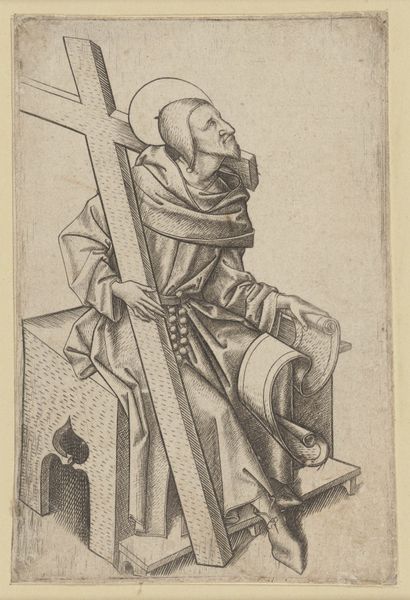
drawing, print, engraving
#
portrait
#
drawing
#
medieval
# print
#
figuration
#
engraving
Copyright: Public Domain
Curator: Here we have a print from the Apostles series: Saint Bartholomew, created by an unknown artist around 1440-1460. It is currently held in the Städel Museum's collection. Editor: He has such a serious look in his eyes! The image gives an immediate impression of gravity and devotion, tinged with perhaps a bit of melancholic acceptance. Is that his martyrdom instrument in his hand? Curator: Indeed. Technically, it’s an engraving – a testament to the detailed linear work achievable even in the early days of printmaking. Notice how the figure fills the frame, composed to maximize the use of contrasting tones created through dense parallel lines. Editor: I can't help but see how his story resonates today. Bartholomew, as a figure of faith facing persecution, provides such a complex representation. Consider the colonial and contemporary dimensions where Christian figures like him become symbols of oppression as well as religious piety. He is not just a static image, but is freighted with historical and ongoing meaning-making in today's conversations. Curator: Precisely! While the use of shading creates depth and volume, giving a sense of realism, the linear patterning flattens the image—reminding us of the constraints the medium placed upon the artist's self-expression. This creates visual tension, doesn’t it? Editor: The tension reminds me of those still subjected to various violences. This Bartholomew embodies strength in the face of it, which is really inspiring! The instrument could symbolize resilience and active choices to live and die on your own terms. I'm just hypothesizing aloud. Curator: His attributes provide crucial clues. The knife traditionally signifies how he was flayed alive as a martyr, while the book alludes to his missionary work. The tight holding of both underscores faith. The artist employs medieval symbolic language while still showcasing individualized representation. Editor: A fitting example, indeed, to exemplify both how we engage with the materiality of an art piece as well as understanding the rich narratives around persecution, resilience, and individual belief that historical artwork evokes. Curator: I think looking closely has given me a deeper appreciation for how early printmakers grappled with portraying profound human experiences. Editor: For me too; understanding historical figures adds richness and new interpretations to discussions surrounding identity, faith, and social resistance today.
Comments
stadelmuseum almost 2 years ago
⋮
The two extremely rare engravings of the Apostles Philipp and Bartholomew (33625) are from an apostle series possibly produced as early as the 1440s and only partially extant today. The engraver went about his work in the manner of a pen drawing, with deep contours and scratched-in clusters of lines for the shadows serving to model the shapes. He characterized his apostles with eloquent, lifelike details, for example Bartholomew’s well-worn shoes.
Join the conversation
Join millions of artists and users on Artera today and experience the ultimate creative platform.


